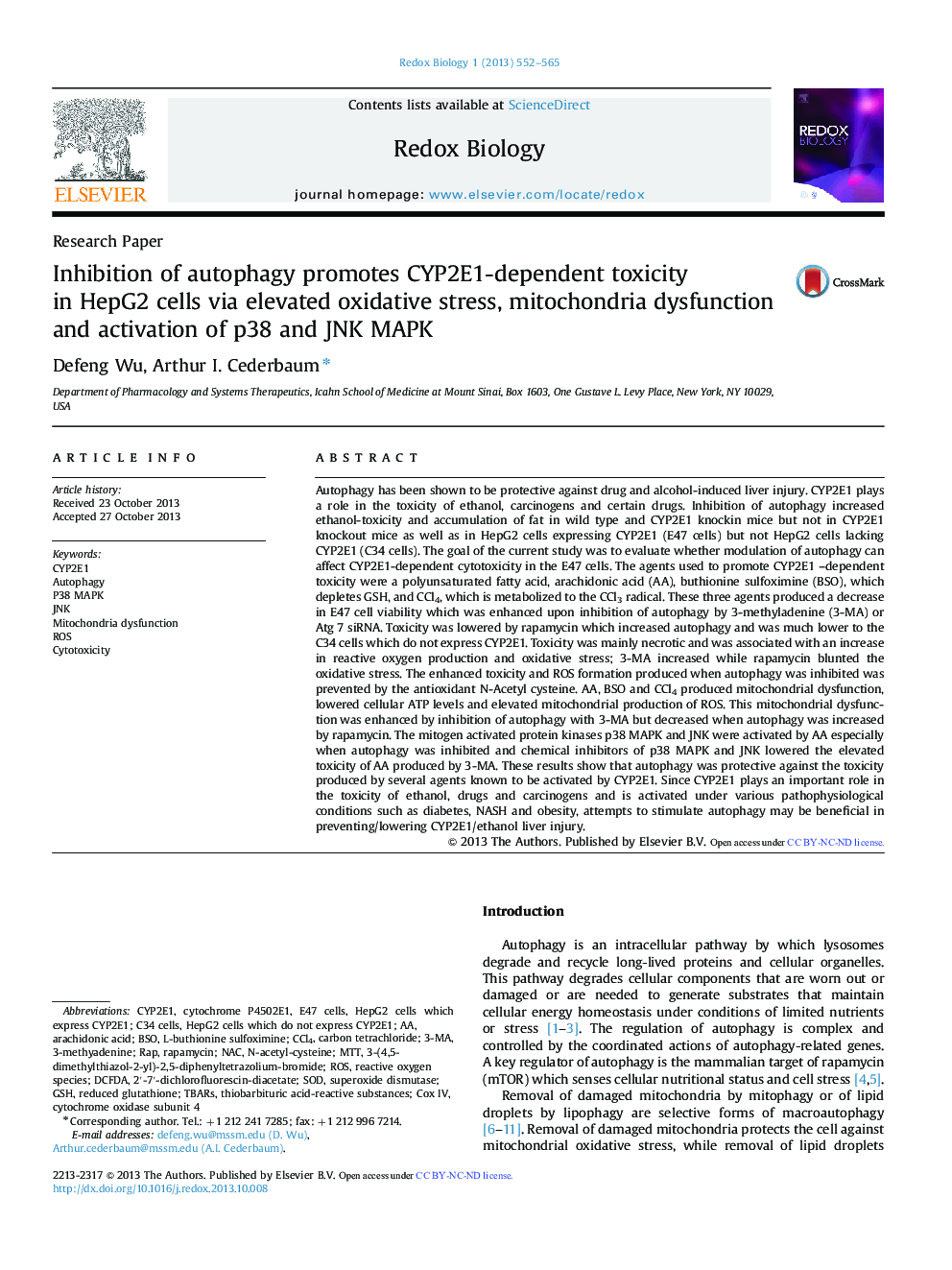| کد مقاله | کد نشریه | سال انتشار | مقاله انگلیسی | نسخه تمام متن |
|---|---|---|---|---|
| 1923273 | 1048882 | 2013 | 14 صفحه PDF | دانلود رایگان |

• Inhibition of autophagy in HepG2 E47 cells which express CYP2E1 promotes AA, BSO and CCl4 toxicity.
• Decreased autophagy in E47 cells increased reactive oxygen production and oxidative stress and potentiated mitochondrial dysfunction.
• The inhibition of autophagy enhanced activation of p38 MAPK and JNK by AA and this activation contributed to the toxicity.
• Autophagy is protective against the toxicity produced by agents known to be activated by CYP2E1.
Autophagy has been shown to be protective against drug and alcohol-induced liver injury. CYP2E1 plays a role in the toxicity of ethanol, carcinogens and certain drugs. Inhibition of autophagy increased ethanol-toxicity and accumulation of fat in wild type and CYP2E1 knockin mice but not in CYP2E1 knockout mice as well as in HepG2 cells expressing CYP2E1 (E47 cells) but not HepG2 cells lacking CYP2E1 (C34 cells). The goal of the current study was to evaluate whether modulation of autophagy can affect CYP2E1-dependent cytotoxicity in the E47 cells. The agents used to promote CYP2E1 –dependent toxicity were a polyunsaturated fatty acid, arachidonic acid (AA), buthionine sulfoximine (BSO), which depletes GSH, and CCl4, which is metabolized to the CCl3 radical. These three agents produced a decrease in E47 cell viability which was enhanced upon inhibition of autophagy by 3-methyladenine (3-MA) or Atg 7 siRNA. Toxicity was lowered by rapamycin which increased autophagy and was much lower to the C34 cells which do not express CYP2E1. Toxicity was mainly necrotic and was associated with an increase in reactive oxygen production and oxidative stress; 3-MA increased while rapamycin blunted the oxidative stress. The enhanced toxicity and ROS formation produced when autophagy was inhibited was prevented by the antioxidant N-Acetyl cysteine. AA, BSO and CCl4 produced mitochondrial dysfunction, lowered cellular ATP levels and elevated mitochondrial production of ROS. This mitochondrial dysfunction was enhanced by inhibition of autophagy with 3-MA but decreased when autophagy was increased by rapamycin. The mitogen activated protein kinases p38 MAPK and JNK were activated by AA especially when autophagy was inhibited and chemical inhibitors of p38 MAPK and JNK lowered the elevated toxicity of AA produced by 3-MA. These results show that autophagy was protective against the toxicity produced by several agents known to be activated by CYP2E1. Since CYP2E1 plays an important role in the toxicity of ethanol, drugs and carcinogens and is activated under various pathophysiological conditions such as diabetes, NASH and obesity, attempts to stimulate autophagy may be beneficial in preventing/lowering CYP2E1/ethanol liver injury.
Journal: Redox Biology - Volume 1, Issue 1, 2013, Pages 552–565